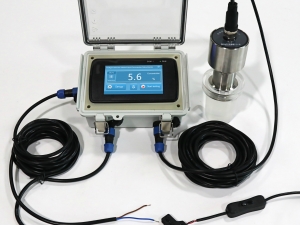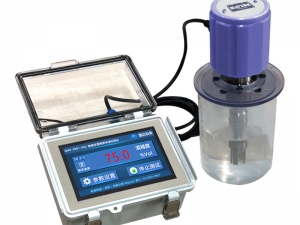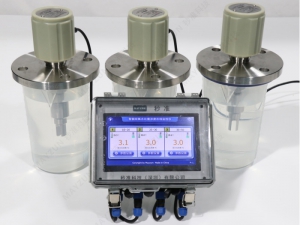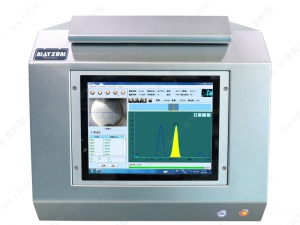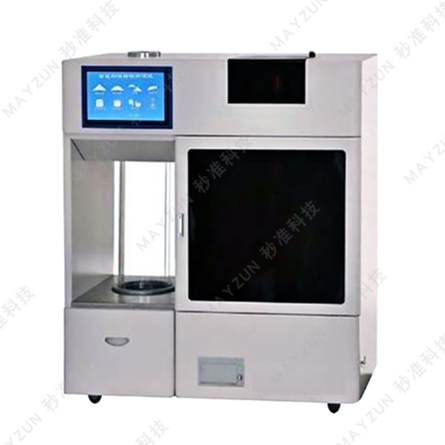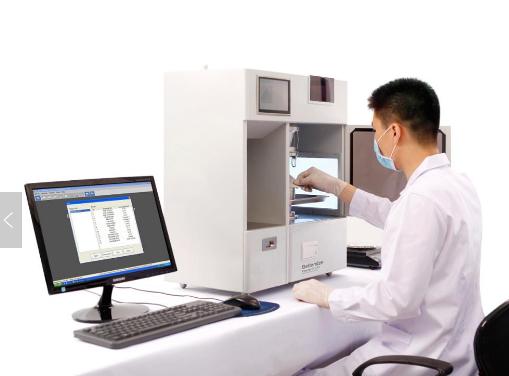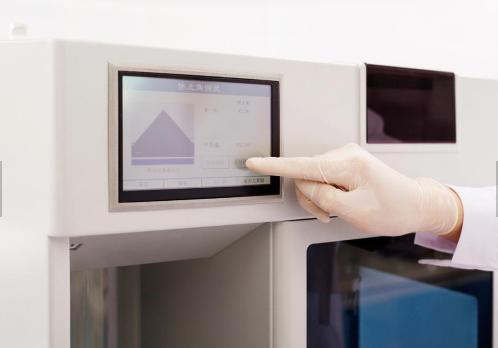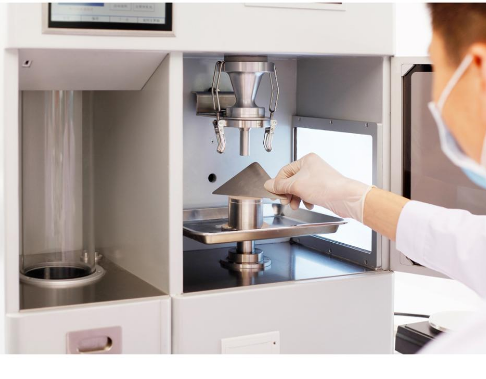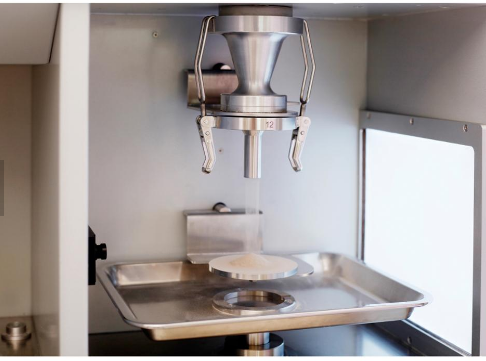MZ-ZH1001 Intelligent Powder Physical Property Tester
Introduction:
Powder physical properties are the basic characteristics of powder materials. The study of powder physical properties has important practical significance for powder production, processing, packaging, transportation, storage, and application. For example, when designing the taper of the storage bin, the angle of repose and the angle of collapse should be considered; the tap density and loose density should be considered when designing the packaging bag or packaging barrel; the fluidity index and spraying should be considered when the powder is transported by gas in the pipeline. Fluidity index and so on. Although the powder physical properties have so many practical significance, the powder physical properties test has been in a primitive and primitive manual state for a long time, the test accuracy is low, the results are unstable, and the powder engineering design work cannot be well guided. In order to make the powder physical property test accurate, scientific, simple and fast, Shenzhen Qunlong Instrument Equipment Co., Ltd. has developed the MZ-ZH1001 intelligent powder physical property tester. This new type of physical property test instrument integrates computer control technology and image processing technology. , Three-dimensional electromagnetic cutting technology, rotational tap density technology, touch screen man-machine interface technology and other modern measurement technologies, so that the measurement of physical properties has entered an era of scientific, intelligent, and precise.
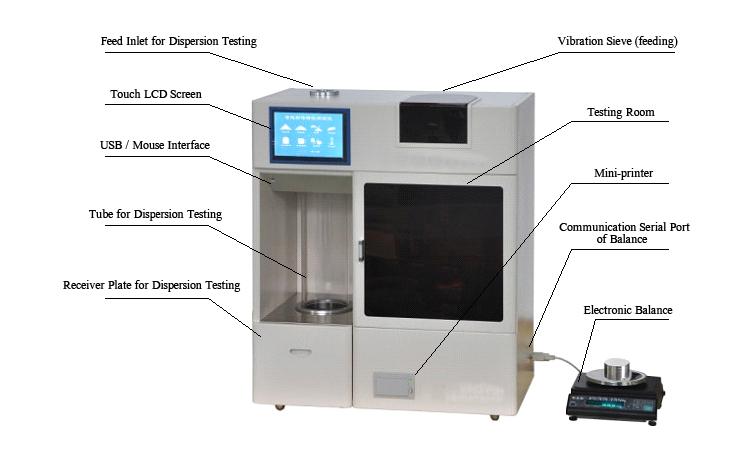
Features
1. There are many test items. Including angle of repose, angle of collapse, angle of difference, plate angle, dispersion, loose density, tap density, compressibility, porosity, uniformity, fluidity index, jet flow index, sieving particle size, etc.
2. Comply with many Chinese standards or international standards. Compliant Chinese standards include GB/T 16913-2008-4.5, GB/T 1479.1-2011, GB/T 5162-2006/ISO3953:1993; complies with American ATSM standard ATSM 6393-08; complies with European Pharmacopoeia EP7. 0 in 07/2010:20934, U.S. Pharmacopoeia 616 and so on.
3. It can be used as a dry sieving particle size analyzer: the analysis range is 45-3000 microns, the sample amount is 10-50 grams, and it can be divided into 8 sieving grades at most. The sieve of each grade can be determined according to the thickness of the analyzed sample. Freely set by time. The analysis result table and histogram can be directly printed out, or exported to Excel for editing.
4. A wide range of applications: including pharmaceuticals, battery materials, powder coatings, non-metallic minerals, graphite, food, non-ferrous metals, powder engineering design, powder physical properties research, and teaching.
5. Image method to measure the angle: use high-definition CCD imaging technology to shoot the powder accumulation image, and then obtain the angle of repose, collapse angle, plate angle, etc. through unique image recognition and processing technology. Fast speed, high precision and good repeatability.
6. Automatic control technology: the introduction of touch screen man-machine interface, easy to operate, the introduction of SOP operation mode to standardize the test process, and the test results are accurate and reliable.
7. Advanced tap density technology: The tap density adopts the perfect combination of frequency conversion and rotational vibration technology for tap density testing. The vibration frequency is continuously adjustable from 50-300 times/min, and the vibration amplitude is 3mm and 14mm optional. The measuring cylinder is in a uniform rotation state during the vibration process to ensure the powder surface is flat and improve the reading accuracy.
8. Data communication: The electronic balance is connected with the instrument, and the weighing data such as container weight, powder weight and total weight are automatically transferred to the system, and automatically calculated, directly transferred to the instrument, and the result is printed. You can also use the U disk to export the results for subsequent processing.
Test and calculation items and concepts
(1) Angle of repose: In the state of static equilibrium, the acute angle between the inclined surface of the natural powder accumulation and the horizontal plane of the bottom is called the angle of repose. It is formed by making the powder naturally fall onto a specific platform through electromagnetic vibration. The size of the angle of repose directly reflects the fluidity of the powder, and the smaller the angle of repose, the better the fluidity. The greater the angle of repose, the worse the fluidity. The angle of repose is also called the angle of repose or the angle of natural slope.
(2) Collapse angle: The collapse angle is the impact of a certain external force on the powder accumulated during the measurement of the angle of repose. At this time, the surface of the accumulated powder may collapse. After the collapse, the acute angle between the powder accumulation slope and the bottom horizontal plane is called Crash angle. The smaller the collapse angle, the better the fluidity of the powder.
(3) Difference angle: The difference between the angle of repose and the angle of collapse is called the difference angle. The larger the difference angle, the stronger the splashing of the powder.
(4) Plate angle: Lift the plate buried in the natural accumulation of powder upwards vertically, and the average value of the angle between the free surface (inclined surface) of the powder on the plate and the horizontal plane and the angle after a certain impact is called For the flat angle. The smaller the plate angle, the stronger the fluidity of the powder. Generally, the plate angle is greater than the angle of repose. The flat angle is also called the spatula angle.
(5) Tap density: Tap density means that after a certain weight (or volume) of powder is filled in a specific container, the container is vibrated with a certain intensity, number of times and time, thereby compressing the gap between the powder particles and making the particles The time is in a tight state. The density of the powder at this time is called the tap density.
(6) Loose packing density: Loose packing density refers to the density of the powder in a natural full state in a specific container.
(7) Compressibility: Compressibility refers to the ratio of the difference between the tap density and the bulk density of the powder to the tap density. The smaller the degree of compression, the better the fluidity of the powder. The degree of compression is also called the compression ratio.
(8) Dispersion: After dropping a certain amount of powder from a certain height, the amount floating out of the receiving tray accounts for the percentage of the total amount of powder cast. The degree of dispersion is the degree of dispersion of the powder in the air. The degree of dispersion is related to the dispersibility, bleachability and spatter of the powder. If the dispersion exceeds 50%, it indicates that the sample has a strong tendency to drift.
(9) Porosity: Porosity refers to the percentage of the voids in the powder to the volume of the entire powder. The porosity changes due to the different factors such as the particle shape, arrangement structure, and particle size of the powder. When the particles are spherical, the porosity of the powder is about 40%; when the particles are ultrafine or irregular, the porosity of the powder is 70-80% or higher.
(10) Homogeneity: Homogeneity is the ratio of D60 and D10 calculated from the particle size distribution obtained by the sieving method. It is mostly used for coarse powder with less cohesiveness.
(11) Coagulation degree: Coagulation degree is an explanatory measurement index for the internal stress of the particles based on the characteristics of the powder during sieving. The greater the degree of aggregation, the worse the fluidity of the powder. The degree of agglomeration is suitable for fine or micro-powder that is easy to agglomerate.
(12) Liquidity index: The liquidity index is the weighted sum of the angle of repose, degree of compression, plate angle, uniformity or cohesion. The liquidity index is related to the degree of compression.
(13) Jet flow index: The jet flow index is the weighted sum of the fluidity index, the collapse angle, the difference angle, and the degree of dispersion.
Parameter | |
Product Name | Powder Physical Characteristics Testing Integrative Characteristic Tester |
Model | MZ-ZH1001 |
Testing Items | total 14 items. Including repose angle, collapse angle, plate angle, dispersion degree, tap density, bulk density, sieve size, difference angle, compression degree, voidage, agglomeration degree, uniformity, flow index, jet flow index. |
Angle Range | 0-90° |
Angle Testing Method | Image method. Image of Rest Angle, collapse Angle or flat Angle is taken by CCD, and accurate angle value is obtained by software identification. |
Repeatability Error | ≤3% |
Tap Density Frequency | 50-300 times/min (continuously adjustable). |
Tap Density Amplitude | 3mm or 14mm |
Standard | Chinese Standard: GB/T16913-2008 4.5 GB/T1479.1-2011 GB/T5162-2006 American Standard: ASTM D6393-14 United States Pharmacopeia: USP32-NF27<616> European Pharmacopeia: EP7.0 07/2010:20934 |
Control Terminal | 2 kinds, namely tablet PC and PC. Various control methods, test process automation, standardization. |
Voltage | AC220V , 50/60Hz ,200W |
Volume , Weight | 580x350x650 mm , 37 kg |


